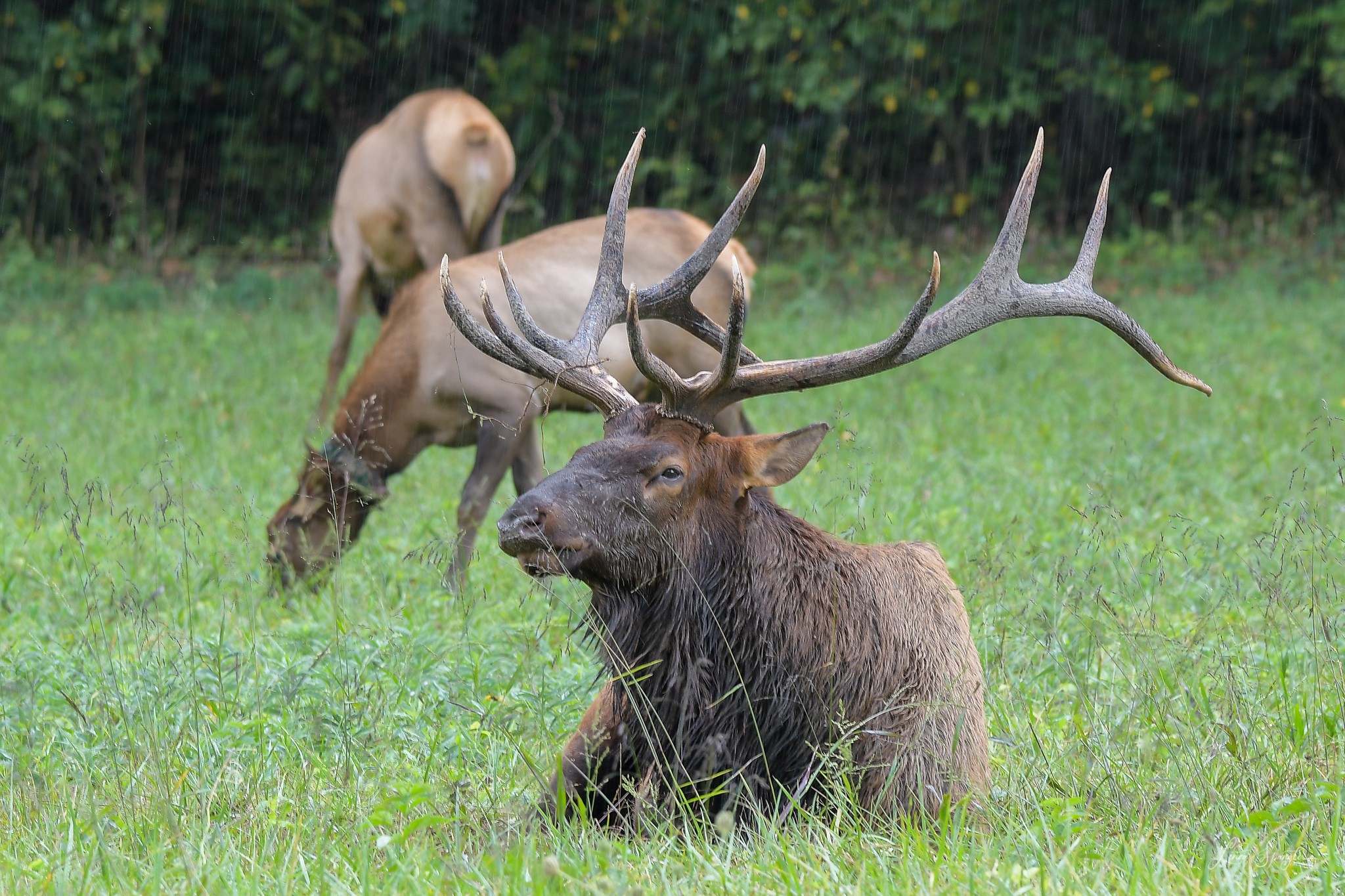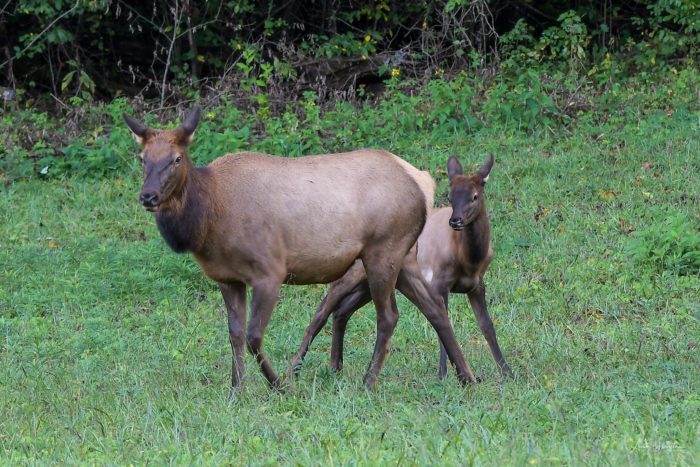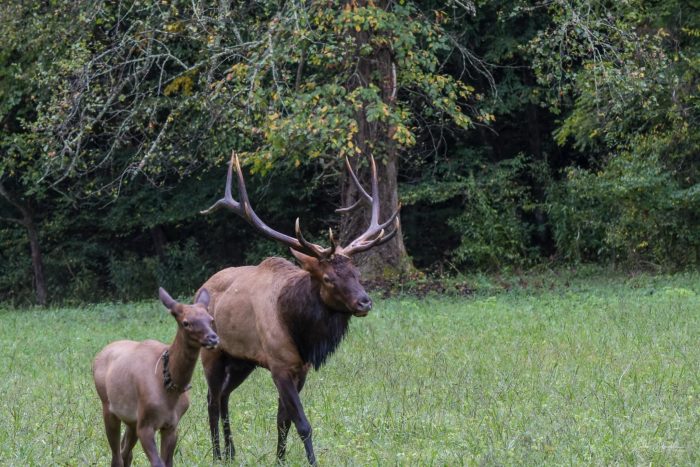by Julie Dodd
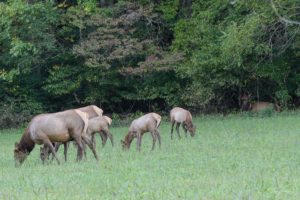
Elk are one of the iconic animals of the Great Smoky Mountains National Park, and many park visitors are eager to view and photograph the elk.
Most of the elk are located in North Carolina, in the areas of Oconaluftte, Cataloochee Valley and Balsam Mountain.
Those interested in seeing elk should be aware that the fields of Oconaluftee and Cataloochee are closed to all public entry during the months of May-June, September-October, and any time elk are present.
I asked photographer Linda Spangler, who took the elk photos in this blog post, to talk about her experience photographing elk in GSMNP.
NPS Wildlife Biologists also provided information about viewing elk.
Stay 50 yards from elk
“These elk I photographed were in one of the open meadows beside the road between the campground and the visitor center,” Spangler said.
“I was on the side of the road near the cars, and the elk were out in the fields. The park asks everyone to stay behind their cars to photograph. I move around and use other peoples cars to keep my distance.”
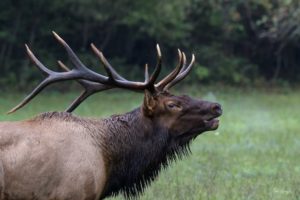
Too often visitors want use their cellphone to take a closeup photo of an elk – the kind Spangler takes with a long lens — and move too close to the animals to take a photo.
“I was using a Sigma 100-400 lens on my Nikon D500,” Spangler explained. “I try to stay very close to a car or big tree while shooting.
“I know it looks like I am standing arm’s length sometimes, but I am not.”
NPS elk viewing guidelines
The Wildlife Biologists provided these elk viewing tips:
-
- Do not approach within 50 yards. Willfully approaching elk closer than 50 yards (150 feet) or any distance that disturbs the elk can result in a fine and arrest. This is a federal law.
- Remain in or near your vehicle.
- Do not stop your car right next to the elk when they are close to the road. Drive further down the road and park a safe distance away from the elk.
- If an elk approaches you, back away and give the animal plenty of space to pass.
- Keep dogs in the car or on a leash.
- Obey the instructions of employees and volunteers in the area.
- Properly dispose of garbage and food scraps.
Don’t interfere with wildlife
“Everyone needs to remember that these are wild animals, and it is up to us to protect ourselves,” Spangler said.
“If you go walking out near them, or not pay attention to what is coming up from behind, then you could easily get caught in the middle. We are in their homes and need to stay alert and safe.”
A female elk (cow) can weigh up to 600 pounds. A male elk (bull) can weigh up to 1,000 pounds.
Cows will charge people to protect their offspring. Even when calves are lying down in the fields, the mother may be feeding nearby.
Bulls may perceive anyone entering their territory as a challenger and charge. Bulls are especially aggressive during the breeding season in September and October.
“We also need to stay quiet and as still as we can so that we don’t interfere with the wildlife,” Spangler said. “Their existence depends on it.”
Elk reintroduced into GSMNP in 2001
Elk were reintroduced into GSMNP in 2001, after having been eliminated in North Carolina and Tennessee due to over-hunting and loss of habitat.
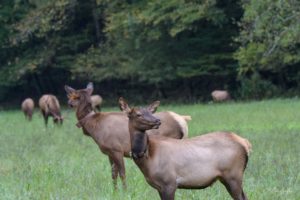
In 2001, 25 elk were brought to the park from the Land Between the Lakes Recreation Area. Another 27 animals were imported in 2002.
FOTS support for elk programs
Friends of the Smokies has played an important role in the successful 18-year effort to establish elk into GSMNP, providing more than $250,000 for elk preservation efforts in the park.
FOTS funds the purchase of equipment, supplies and GPS collars to be used in elk management and monitoring.
FOTS also supports the Volunteer Elk Bugle Corps, a team of dedicated volunteers that provides interpretive and safety information to park visitors to enhance their viewing experience while helping to preserve the natural behavior patterns of the elk herd. The funds help supply uniforms for the corps, educational materials and supplies.
You can support programs to preserve the elk by making a donation to FOTS.

